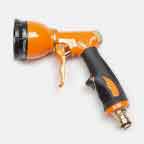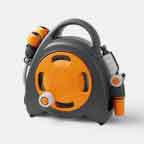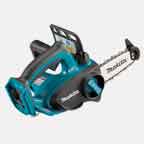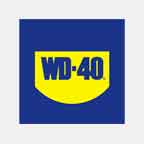General Advice
-
Anvil versus Bypass Secateurs
-
Cut n Hold Pruner: Pick Fruit or Flowers
-
How to Choose the Best Ratchet Secateurs
-
How to Properly Use Secateurs for Pruning?
-
How to Select the Right Gardening Gloves
-
Know the Benefits of Using a Pole Saw for Tree Pruning and Maintenance
-
Pruning Hedges
-
Secateurs - types and uses
-
Ten Practical Pruning Tool Tips
-
Time to Prune
-
Tips for Picking Up Leaves
-
Top 5 Maintenance Tips to Keep Your Long Pole Saw in Peak Condition
-
What Are Secateurs and Why Are They Indispensable for Your Garden?
-
What Key Features Should You Look for in an Extendable Tree Pruner?
-
What to look for in garden tools
-
Why Every Gardener Should Invest in Long-Handled Secateurs?
CutAbove Tools
Anvil versus Bypass Secateurs
CutAbove Tools often give talks at Garden Clubs and ask the question "What is the most important tool in the Garden Shed?" Invariably the answer is 'secateurs' however not many people know the difference between Anvil and Bypass Secateurs. We thought it would be worth discussing the features and benefits of these two popular secateurs.
Anvil secateurs have an upper blade that is typically sharp both sides and cuts down onto a lower 'anvil'. This anvil can be metal or have a hard plastic insert. The action is much like a guillotine or a knife on a chopping board. With a blade sharp on both sides, pruning harder stems will be easier. For tougher or woodier stems, a pair of anvil secateurs is recommended.
The majority of ratchet secateurs are of the anvil design. Some people suggest that anvil secateurs shouldn't be used to cut green material because it will be squashed rather than cut. However, there are a lot of experienced (mature) gardeners that find the ratchet anvil secateurs very useful. Anvil secateurs are also good for both right and left handers. The top handle is flat and the safety latch is in the central position. As indicated, ratchet secateurs are extremely popular with gardeners with tendonitis, arthritis and/or those with declining strength.
Bypass secateurs have a convex shaped blade, sharp only on the outer edge cutting down beside an anvil or non-sharp hook concave in shape. The anvil or hook is typically smaller on bypass secateurs. Bypass secateurs are the most common type, used for pruning live stems and where you need to make sharp, precise cuts. They are more suitable for cutting softer, stringier living stems as the blade cuts all the way through the stem. Bypass secateurs can cut smaller stems right against a larger stem and due to this functionality nursery people will typically use this type of secateur. The majority of bypass secateurs are designed for right handers with a tapered handle, with the outside edge of the blade on the right side and safety latch controlled by the right thumb. Harder or dead stems may cause the stem to bend rather than be cut, and get caught between the blade and the hook. This can cause the two sections to separate resulting in damage to your secateurs.
In summary - for the average gardener who is not grafting or propagating either the anvil or bypass secateurs will be suitable. In an ideal situation where either blade is sharp you will get a nice clean cut on living tissue. The anvil secateurs are more useful for harder wood as both sides of the blade is typically sharp and since the blade is like a guillotine, is less likely to cause damage (separation of the blade and hook) to the secateurs. These are very effective with lots of shrubs to prune, or cutting up to stems for the compost bin. They also are invaluable if you are loosing strength or have arthritis or tendonitis. If you are cutting flowers and herbs / spices bypass style secateurs are recommended.
Whilst there is a lot to be said for using the "right tool for the right job" it is more important to get the right secateurs for you. In addition to cutting action, check hand size and weight of the tool.












